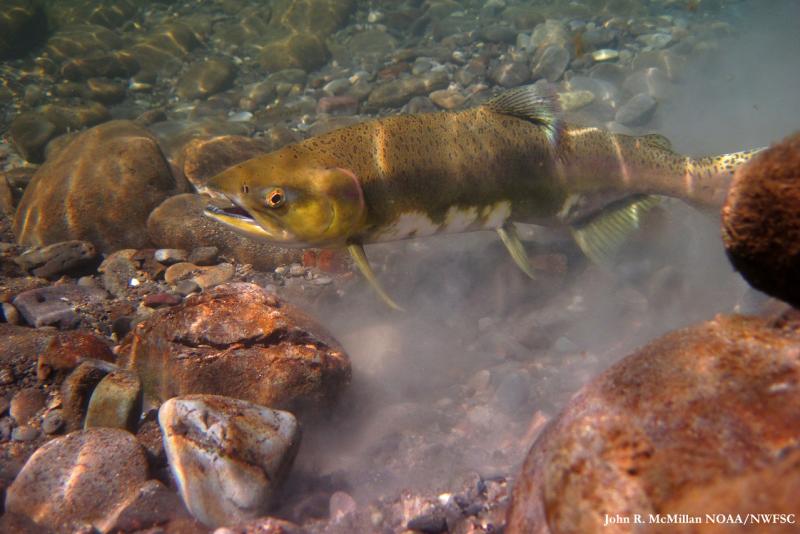
Species-specific results are available for each population group.
Authors noted that salmon have long thrived in the region, proving themselves resilient to past shifts in climate. However, climate is now changing at an unprecedented rate. Most populations now lack access to habitat that once provided refuge from climate extremes.
“Salmon have always adapted to change, and they have been very successful—otherwise they wouldn’t still be here,” said Lisa Crozier, a research scientist at NOAA Fisheries Northwest Fisheries Science Center and lead author of the assessment. “What we are trying to understand is which populations may need the most help with anticipated future changes in temperature and water availability, and what steps we can take to support them.”
Most Vulnerable Pacific Salmon Populations
Salmon are a mainstay of West Coast fisheries. However—because their lifecycle stretches from freshwater rivers into the ocean and back—they face climate-related changes and other challenges in each of those environments. More than half of all salmon and steelhead population groups in the contiguous United States are listed as threatened or endangered under the Endangered Species Act.
Overall, the West Coast salmon stocks most vulnerable to climate change, and least able to adjust to differences, are:
- Chinook salmon in California’s Central Valley.
- Coho salmon in California and southern Oregon.
- Snake River sockeye salmon.
- Spring-run Chinook salmon in the interior Columbia and Willamette River basins.
Salmon and steelhead stocks will be affected differently by the environmental shifts expected with climate change. The assessment examined the stocks' sensitivities to a variety of threats and constraints.
Pacific Salmon’s Capacity to Adapt
The assessment also examined salmon and steelhead population groups for their ability to adapt to climate change, a quality known as “adaptive capacity.” The southernmost populations of many salmon and steelhead species have low adaptive capacity. This is likely because they are already stressed by loss of habitat, environmental conditions near the limits of their tolerance, and low reproduction of wild fish compared with hatchery fish.
The populations that scored highest in adaptive capacity were:
- Puget Sound steelhead, Chinook and coho salmon.
- Lower Columbia River steelhead and Chinook salmon.
- Snake River spring/summer and fall Chinook salmon.
- Northern California steelhead.
The varied life histories of these population groups give them more flexibility to respond to climate change. Although existing diversity may help these populations, ultimately some of that diversity will be lost.
Other adaptations might not affect diversity, however. Some populations might shift their migration earlier or later to avoid the midsummer heat, for example. And habitat restoration projects—including removing dams that prevent adequate fish passage—could provide some species with more of a buffer against changing temperatures and flows.
“The fish will change; we have to be prepared for that,” Crozier said. “Given a chance to persevere, they will take advantage of it.”


